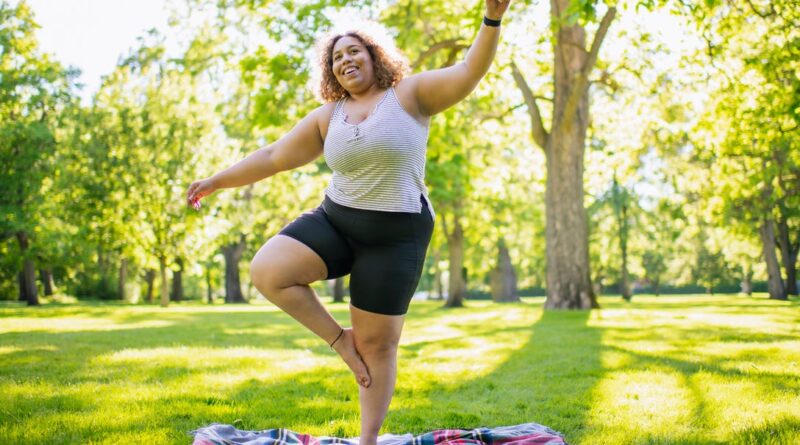How long you can balance on one leg says about your life
- How long you can balance on one leg may be an important indicator of your health and aging, a new study finds.
- Researchers have found that how long a person can stand on one leg is a better measure of aging than changes in strength or walking.
- Experts explain how balance is related to biological age, and how a test can find yours.
Indeed, yoga can be a powerful low-impact exercise to boost overall health. But it seems that one area, in particular, can show more of your flexibility. How long you can stand on one leg may be an important indicator of your health and how old you are, according to new research.
A small Mayo Clinic study published in PLoS One looked at 40 healthy, independent people over the age of 50—half of them under 65; the other half were 65 and older. The researchers used the following tests to assess age-related decline as well as gender differences.
- Grip strength: A handheld device was used to measure upper body strength.
- Knee strength: Knee extension exercises tested for lower body strength.
- Gait: Participants walked at their own pace along a designated path while a motion analysis system captured their movements.
- Balance: Participants stood on balance plates during four different conditions: both legs with eyes open, eyes closed, and dominant and non-dominant leg open the eyes. Participants could hold the non-standing leg where they wanted.
Among the four tests, researchers found that the length of time a person maintains balance while standing on one leg shows “the greatest rate of decline with age,” according to the Mayo Clinic. . In other words, the results showed that the time a person can stand on the dominant and non-dominant leg has decreased significantly with age—and the decrease is greater than walking and muscle strength.
Specifically, the researchers determined that the time a person can stand on one leg decreased by 2.2 seconds per decade in the non-controlled leg, while doing the same at speed. of 1.7 seconds per decade in the main leg. The researchers noted that these findings held true for all men.
“Balance is an important measure because, in addition to muscle strength, it requires input from vision, the vestibular system [a sensory system in the inner ear that helps maintain balance]and somatosensory systems [part of the nervous system that allows people to perceive sensations from the body, like touch, pressure, pain, temperature, and movement]”said Kenton Kaufman, Ph.D., senior author of the study and director of the Mayo Clinic’s Motion Analysis Laboratory, a statement. “The moderate changes are noticeable. If you have poor balance, you are at risk of falling, whether you move or not. Falls are a serious health hazard with serious consequences. ”
The report showed that the leading cause of injury in adults age 65 and older is unintentional falls—and the majority of falls among older adults are caused by loss of balance.
Important point
This research shows how balance can be used as a measure of age, but it is not the first study to do so. A June 2022 scholarship confirmed that the ability to balance is related to longevity, finding that those unable to stand on one leg for 10 second measurement test they were associated with an 84% increased risk of death over the next seven years.
The good news is that you can take steps to prevent this balancing exercise. “For example, by standing on one leg, you can train your muscles to coordinate with your vestibular responses to maintain proper balance. If you can stand on one leg for 30 seconds, you are doing well. , “Dr. Kaufman said in a Mayo Clinic statement.
“If you don’t use it, you lose it. If you use it, you keep it,” Dr. Kaufman continued. It’s easy to do. It does not require special equipment, and you can do it every day.
#long #balance #leg #life
